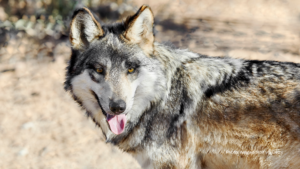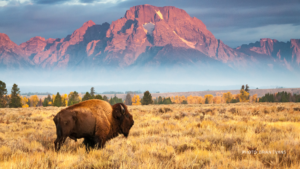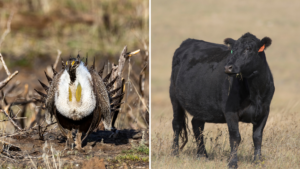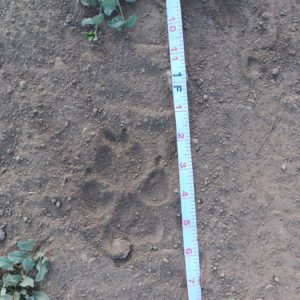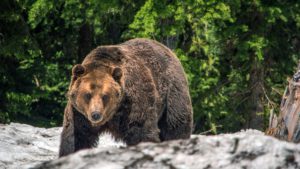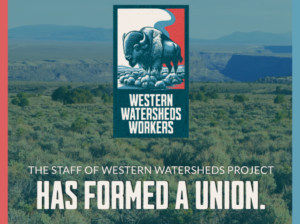For Immediate Release – January 3, 2023
Contacts:
John Hadder, Great Basin Resource Watch, 775-348-1986; john@gbrw.org
Kevin Emmerich, Basin and Range Watch, 775-553-2806; emailbasinandrange@gmail.com
Katie Fite, Wildlands Defense, 208-871-5738; katie@wildlandsdefense.org
RENO, NV. —On Thursday January 5, 2023, the combined plaintiffs, a coalition of conservation and public accountability groups, Tribes, and a Thacker Pass area rancher, will present oral arguments in opposition to the Thacker Pass Lithium Mine Final Environmental Impact Statement and Record of Decision in the District of Nevada, challenging the Bureau of Land Management’s (“Bureau”) approval of the Thacker Pass Lithium Mine. The mine was fast tracked by the Trump Administration and completed its environmental review process in less than one year despite the enormous environmental impact to the nearly 18,000 acres of public land that would be affected by the operation.
Plaintiffs will cite the Bureau’s violations of federal laws, including the National Environmental Policy Act and Federal Land Policy and Management Act, when it approved the Thacker Pass Lithium Mine’s Plans of Operation on January 15, 2021.
Thacker Pass is critically important to wildlife because it connects the Double H Mountains to the Montana Mountains. The pass also provides lower-elevation habitat that wildlife need to survive the winter. It will eliminate thousands of acres of the most important type of greater sage-grouse habitat and two pronghorn migration corridors. Golden eagles nesting in the nearby cliffs and canyons forage there for food to feed their chicks. Local springs are the only place in the world where the Kings River pyrg, a rare type of springsnail, are known to live.
Other wildlife at risk from the Thacker Pass mine include Endangered Species Act-listed Lahontan cutthroat trout, bighorn sheep, and pygmy rabbits.
“The Montana Mountains landscape has long been identified as a key area for biodiversity protection in Nevada,” said Katie Fite, Public Lands Director for Wildlands Defense. “Along with adjacent Oregon wild lands, it constitutes one of the last big blocks of the sagebrush sea free of development. Pygmy rabbits, migratory birds and other wildlife suffered a major blow from wildfire a decade ago and habitat has not yet recovered. Now this mega-mine will obliterate vital remaining sagebrush. The mine’s regional disturbance footprint will wallop struggling wildlife populations, causing new declines.”
Plaintiffs will further argue that BLM failed in its duty to protect public resources by allowing a mine that will be a source of groundwater pollution for at least 300 years and not requiring long-term financial assurances.
“The reckless permitting of the Thacker Pass lithium mine sets a bad precedent for the Energy Transition.” said John Hadder, Director of Great Basin Resource Watch. “We now have a situation where the BLM rushed ahead of the state of Nevada permitting process resulting in a federal permit that allows groundwater contamination from the mine pit rejected by the state of Nevada.”
“The Bureau of Land Management must manage Thacker Pass and connecting mountains to preserve essential sage grouse habitat, old growth sagebrush, golden eagle nests, endemic springsnails and additional wildlife,” said Kevin Emmerich, Co-Founder of Basin and Range Watch. “The unique viewshed and dark skies should be managed to retain the existing character of the landscape. The open pit, waste rock facilities, noise and water use required for the Thacker Pass Lithium Mine all would cause critical damage to a remaining stronghold for local wildlife, and the viewshed will be damaged forever.”
“We need a smart energy future that transitions our economy from fossil fuels to renewables without sacrificing rare species in the process,” said Greta Anderson, deputy director with Western Watersheds Project. “We can’t solve the climate crisis by deepening the biodiversity crisis.”
Modern large-scale mining is very destructive to the natural ecosystems and often disruptive to frontline communities. It is estimated by the United Nations International Resource Panel that, “90 percent of biodiversity loss and water stress are caused by resource extraction and processing.” And the Panel goes on to note that, “Annually, the extraction of metals and minerals has risen significantly, from 11.6 billion tons in 1970 to 53.1 billion tons in 2017, accounting for 20% of climate impacts.”
It is essential therefore that the siting of mining operations be done carefully, judiciously, and in a manner that allows for the full range of consequences of the proposed mine to be fully explored and addressed. Never is there a time to fast-track or “expedite” mine permitting, even for lithium and other “energy transition” metals. Expediting is a step backward, which will accept incompletely analyzed mine plans that unnecessarily allow environmental damage and run over concerns of the directly affected communities. The permitting process for the proposed Thacker Pass Lithium mine serves as an example of what not to do and thus triggered these lawsuits.
According to Lithium Nevada Corporation’s Plans of Operation, the mine would entail:
● excavation of a large open pit roughly 2.3 miles long by about half a mile at the widest
● removal of 17.2 million tons of rock and ore per year (phase 2)
● direct surface disturbance of 5,694 acres (total project size would be 17,933 acres)
● on-site sulfuric acid plant – 5,800 tons of acid per day during phase 2
● ultimately pumping up to 1.7 billion gallons of water per year
● estimated lifetime of 41 years and 5 years of reclamation
Attorneys from Western Mining Action Project and Western Watersheds Project represent Western Watersheds Project, Great Basin Resource Watch, Basin and Range Watch, and Wildlands Defense.
Western Watersheds Project is a nonprofit environmental conservation group dedicated to protecting and restoring wildlife and watersheds throughout the American West.
Great Basin Resource Watch is a nonprofit public interest organization that works with communities to protect their health, land, air, water, and wildlife of the Great Basin from the adverse effects of mining and resource extraction.
Basin and Range Watch is a 501(c)(3) non-profit working to conserve the deserts of Nevada and California and to educate the public about the diversity of life, culture, and history of the ecosystems and wild lands of the desert.
Wildlands Defense works to inspire and empower the preservation of wild lands, wildlife and biodiversity in the West.
###

